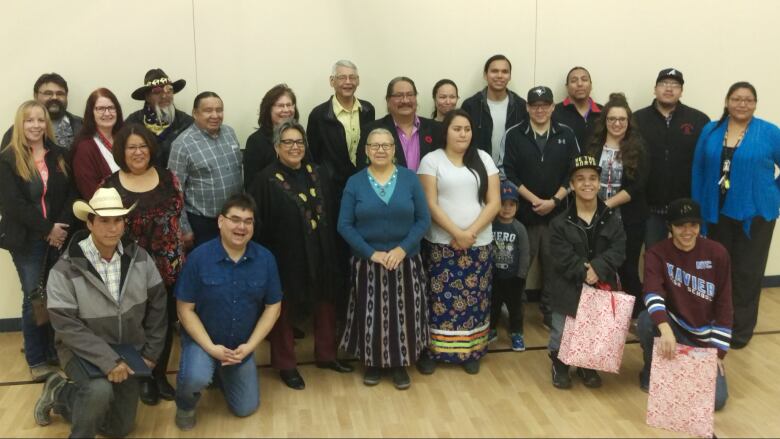Sask. Indigenous youth treatment centre helps give graduates a sense of identity
Leading Thunderbird Lodge celebrates 10 years

People filled the gymnasium of Saskatchewan's Leading Thunderbird Lodge at an emotionalevent this week to celebrate the facility's10 years of helping youth.
The Leading Thunderbird Lodge (LTL) is a mental health and addictions treatment facility forIndigenous male youth located in the resort village of Fort San, Sask.
Since its opening, the youth treatment centre has helped more than500 young Indigenous men.
Azure Johnsonsaid that theLTL"was the first place I thought of"when she heard her son was making some bad choices.
"It was geared towards Aboriginal boys," said Johnson.
"It was very comforting and helpful to know that there was a program that existed in Canada that was specific to my culture and my son's culture."
The lodge is deep-rooted in Indigenous knowledge with a focus on teaching the youth about traditional Indigenous practices.
- Indigenous youth who use drugs in B.C. dying at an alarming rate, study finds
- 28 days on the land: Is this the future of addictions treatment in Nunavut?
- New indigenous program finds culture key to overcoming addictions
"I really loved the sweats," said Johnson's son,TymonCarter, a member of Onion Lake Cree Nation.
"The drumming...scraping the [buffalo]hides, soaking the hides. We learned a lot of the language as well," said Carter, who was 14 when he attended the program.
Carter, now 19, has experienced a wealth of opportunity since graduating from his treatment program.

"After I left [LTL]... my mom got me into acting," said Carter.
"My first role was on Lewis and Clark, a TV mini-series for HBO, and it kind of just took off from there."
Johnson said since her son has left the lodge, he has strong cultural identity and is proud of being a young Indigenous man.
"He dances traditional now. Being able to go sit at the drum ...going to ceremonies ...he attends more because he's learned more."
'A sense of identity'
Karen Main, executive director ofLTL, said it'sbeen an exciting 10 years.
"More so it's seeing the youth that come through," she said.
"They come in with their heads held down, lack of confidence, lack of self-esteem, and they leave three months later ... they have a sense of identity."
The facilityis perched alongside a hill overlooking Echo Lake, minutes away from the location where Treaty 4 was signed in 1874.
"A lot of the youth that come in are struggling with addictions," said Main.
"We don't look at the addictions when they come in. It's part of it [but]we look at whole person wellness."
A recent graduate of the LTL program, Phoenix Peters, 18, said the program helped him realize who he is and made him a better person all together.
Peters, who is originally from Saskatoonbut now lives on Kinistin Saulteaux Nation, said Indigenous youth who may feel lost in life right now should consider the LTL program.
"If you want a better life and you want to change your life ... come here because this place is awesome and it will change your life forever," he said.












_(720p).jpg)


 OFFICIAL HD MUSIC VIDEO.jpg)
.jpg)



























































































